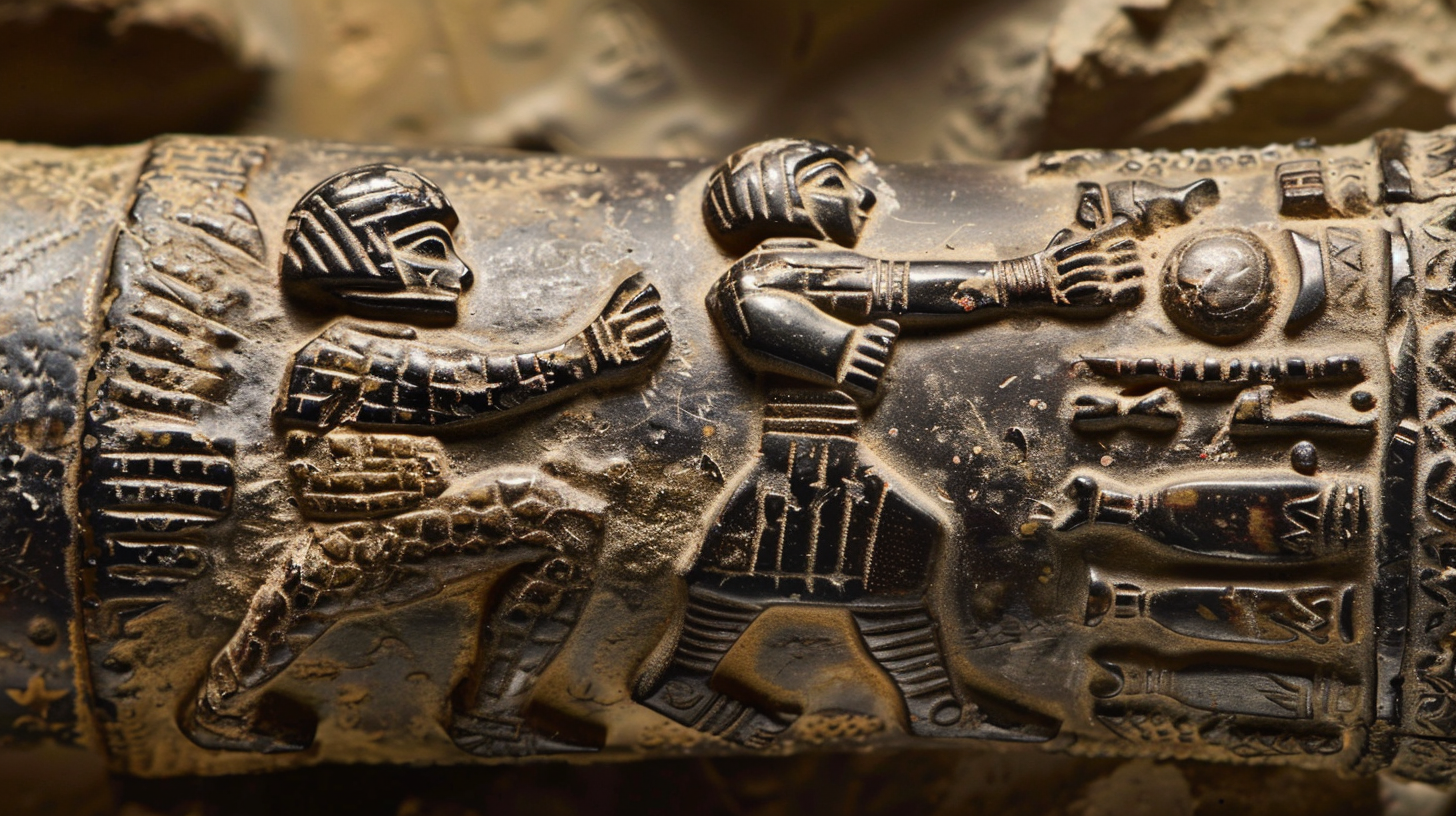Delving into the mysteries of ancient civilizations, the enigmatic artifacts left behind by the pioneering Sumerians continue to captivate researchers with their intriguing complexity. Among these relics, the Sumerian cylinder seals stand out as small cylindrical objects adorned with intricate designs that baffle and fascinate scholars to this day. Within these designs, some interpretations suggest the presence of figures donning what resembles spacesuits, sparking debates on encounters with extraterrestrial beings or the symbolism embedded in these ancient engravings.
At the heart of the discourse lie the multifaceted functions of Sumerian cylinder seals in ancient Mesopotamia, where these objects served as signatures, talismans, or administrative instruments. Fashioned from stone or clay, these seals bore elaborate designs that were meticulously etched and then impressively rolled onto various surfaces like clay tablets. Among the diverse array of motifs adorning Sumerian cylinder seals, some portray humanoid forms garbed in intricate attire reminiscent of futuristic spacesuits.
Advocates of the extraterrestrial theory behind Sumerian cylinder seals argue that these depictions offer evidence of otherworldly encounters. They point to the detailed features of the suits – helmets, gloves, and apparatuses resembling breathing devices – as indications of advanced technology surpassing ancient civilization capabilities. Moreover, the consistent depiction of these suits across different seals hints at purposeful repetition rather than random artistic creation.

Supporters of the ancient astronaut hypothesis draw parallels between Sumerian portrayals and contemporary UFO sightings and stories of extraterrestrial encounters. They suggest that the similarities between ancient and modern accounts indicate a shared experience transcending time and cultural boundaries. According to this viewpoint, the Sumerians might have witnessed or engaged with beings from distant worlds, immortalizing these encounters through their artwork.
Conversely, skeptics propose alternative perspectives on the figures in spacesuits depicted on Sumerian cylinder seals. They posit that these suits could symbolize deities or mythological entities rather than literal representations of alien beings. In Mesopotamian lore, gods and goddesses often manifested in anthropomorphic forms, blurring the distinctions between human and divine. As a result, the figures on the seals could symbolize these mythic beings rather than actual extraterrestrial entities.
Refraining from superimposing contemporary interpretations onto ancient relics, critics stress the vital role of cultural context in interpreting Sumerian art. In the absence of concrete evidence, such as remnants of advanced technology or explicit references to alien contact, the ancient astronaut theory retains its speculative nature.
Offering an additional viewpoint, some interpret the depictions of beings in spacesuits on Sumerian cylinder seals as allegorical or symbolic representations. In ancient mythos, the heavens often represented the realm of divine entities who governed human destinies. Hence, the portrayal of figures in spacesuits may symbolize these celestial beings rather than concrete depictions of extraterrestrial visitors.
In summary, the ongoing debate over Sumerian cylinder seals featuring figures in spacesuits stirs curiosity and contemplation among scholars and enthusiasts. Whether these depictions hint at alien encounters, symbolize mythological figures, or merely reflect artistic imagination, the enigmatic allure of Sumerian art persists, inspiring exploration of ancient enigmas and the potential for contact with beings beyond our world.
